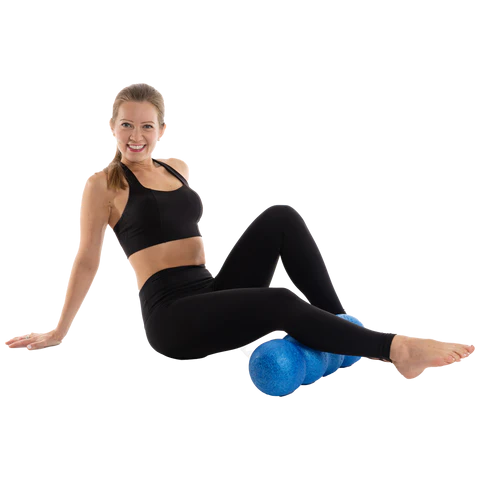What It Is and How to Relieve the Pain with Foam Rolling, Pressure Points, and Trigger Point Therapy
Sciatica is a condition that causes pain, numbness, or tingling down the leg, along the path of the sciatic nerve. The sciatic nerve is the longest nerve in the body, and it runs from the lower back down through the buttocks, thigh, and calf, to the foot and toes. Sciatic Nerve Pain
Sciatica can be caused by several factors, including:
- A herniated disc in the spine
- Spinal stenosis, is a narrowing of the spinal canal
- Degenerative disc disease is a condition in which the discs in the spine break down
- Spondylolisthesis is a condition in which one vertebra slips out of place over another
- Muscle spasms in the buttocks or lower back
- Piriformis syndrome is a condition in which the piriformis muscle, a small muscle in the buttocks, compresses the sciatic nerve
Symptoms of sciatica
The most common symptom of sciatica is pain down the leg, along the path of the sciatic nerve. The pain may be sharp, dull, or burning. It may also be accompanied by numbness, tingling, or weakness in the leg.
In some cases, the pain from sciatica may be so severe that it makes it difficult to walk or stand.
Treatment for sciatica
Treatment for sciatica depends on the underlying cause. In most cases, sciatica can be treated with self-care measures, such as rest, ice, and heat. Over-the-counter pain relievers, such as ibuprofen or acetaminophen, may also be helpful. Soleus Muscle
If self-care measures are not effective, your doctor may prescribe physical therapy, medication, or injections. In rare cases, surgery may be necessary.
Foam rolling for sciatica
Foam rolling is a self-massage technique that can be used to relieve muscle tension and pain. It can also be used to improve flexibility and range of motion. Foam Roller
Foam rolling can be helpful for sciatica by releasing tension in the muscles of the buttocks, lower back, and hamstrings. These muscles are all located along the path of the sciatic nerve, and tension in these muscles can contribute to sciatic pain.
To foam roll for sciatica, you can use a standard foam roller or a rumble roller. A rumble roller is a foam roller with ridges that provide additional massage and stimulation.Pressure Points
To foam roll the buttocks, sit on the foam roller with your feet flat on the floor. Position the foam roller under the center of your buttocks. Slowly roll back and forth over the foam roller, applying pressure as needed.
To foam roll the lower back, lie on your back with the foam roller under your lower back. Position the foam roller so that it supports the curve of your lower back. Slowly roll back and forth over the foam roller, applying pressure as needed. Trigger points
To foam roll the hamstrings, sit on the floor with the foam roller under your hamstrings. Extend one leg out in front of you, with the heel of your foot on the floor. Position the foam roller under the back of your thigh, just above your knee. Slowly roll back and forth over the foam roller, applying pressure as needed.
Pressure points for sciatica
Therseveralber of pressure points on the body can be used to relieve sciatica pain. These pressure points are located on the lower back, buttocks, and legs.
To use pressure point therapy for sciatica, apply firm pressure to the desired pressure point for 1–2 minutes. You can use your fingers, knuckles, or a massage tool to apply pressure.
Here are a few pressure points that may be helpful for sciatica:
- BL-54 (bladder 54): This pressure point is located on the back of the thigh, just behind the knee.
- GB-30 (gallbladder 30): This pressure point is located on the outside of the thigh, just below the hip.
- ST-36 (stomach 36): This pressure point is located on the outside of the leg, just below the knee.
- SP-6 (spleen 6): This pressure point is located on the inside of the leg, four inches above the ankle bone.
- LR-3 (liver 3): This pressure point is located on the top of the foot, between the big toe and the second toe.
Trigger point therapy for sciatica
Trigger points are areas of tight and painful muscle. Trigger points can form in any muscle in the body, but they are common in the muscles of the buttocks, lower back, and hamstrings. Pressure point therapy
